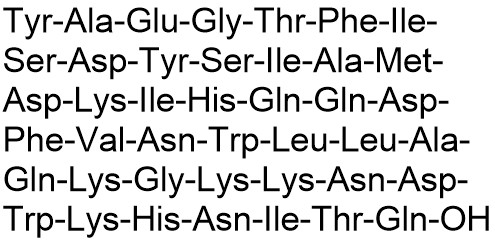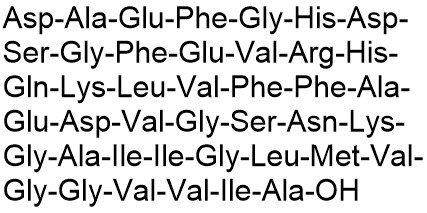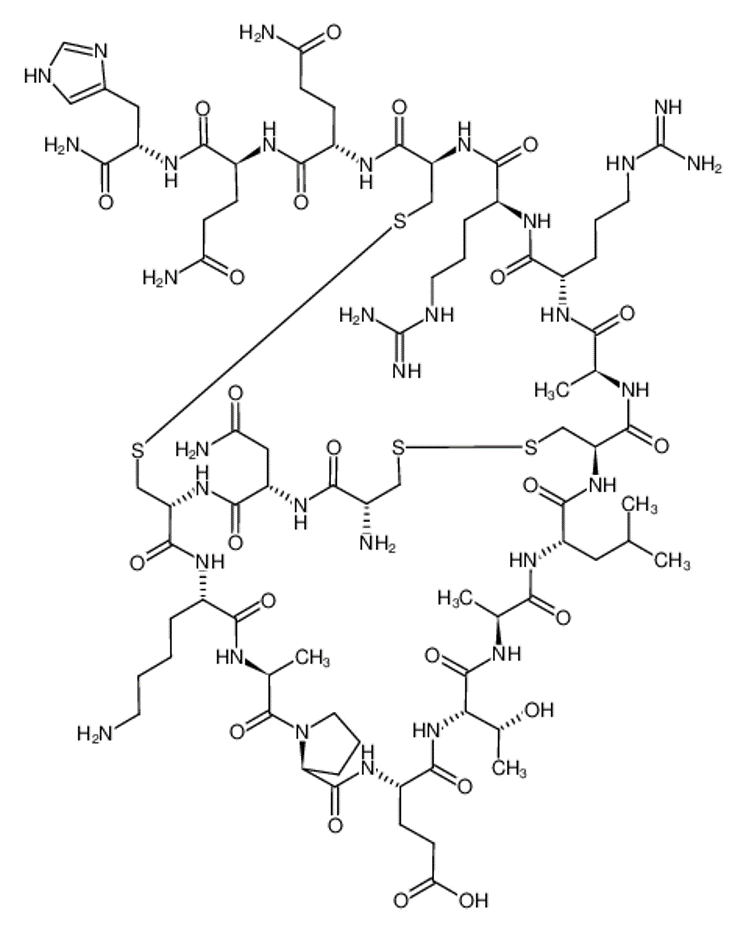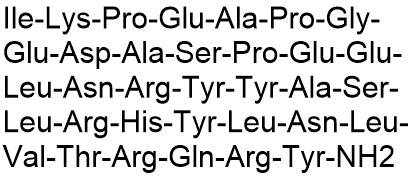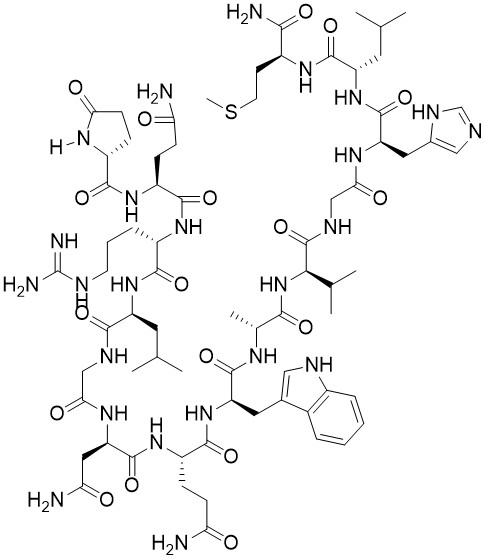CAS Number: 100040-31-1
Molecular Weight: 4983.60
Salt Form: TFA
Purity: >95%
Sequence (3-letter): Tyr-Ala-Glu-Gly-Thr-Phe-Ile-Ser-Asp-Tyr-Ser-Ile-Ala-Met-Asp-Lys-Ile-His-Gln-Gln-Asp-Phe-Val-Asn-Trp-Leu-Leu-Ala-Gln-Lys-Gly-Lys-Lys-Asn-Asp-Trp-Lys-His-Asn-Ile-Thr-Gln-OH
Sequence (1-letter): YAEGTFISDYSIAMDKIHQQDFVNWLLAQKGKKNDWKHNITQ-OH
Storage: -20 °C or below
Solubility: water to 1 mg/mL
Gastric inhibitory polypeptide (GIP) is part of the incretin family of hormones that regulate blood glucose levels. GIP lowers blood glucose levels by stimulating an increase in insulin levels. As such, GIP is an essential regulator of insulin secretion and glucose homeostasis. It is a high affinity agonist of its receptor (EC50 = 0.81 nM) that inhibits gastric acid secretion and stimulates pancreatic insulin release in response to glucose. GIP has also been shown to affect lipid metabolism and exhibit mitogenic and antiapoptotic effects in pancreatic β-cells. Also referred to as Glucose-dependent insulinotropic polypeptide
References
1. Hansotia, T. et al. (2004) “Double Incretin Receptor Knockout (DIRKO) Mice Reveal an Essential Role for the Enteroinsular Axis in Transducing the Glucoregulatory Actions of DPP-IV Inhibitors” Diabetes 53 (5): 1326-1335.
2.Nauck, M.A. (1993) “Additive insulinotropic effects of exogenous synthetic human gastric inhibitory polypeptide and glucagon-like peptide-1-(7-36) amide infused at near-physiological insulinotropic hormone and glucose concentrations” J. Clin. Endocrinol. Metab. 76 (4): 912-7.
3. Mentlein, R., Gallwitz, B. and Schmidt, W.E. (1993) “Dipeptidyl-peptidase IV hydrolyses gastric inhibitory polypeptide, glucagon-like peptide-1(7–36)amide, peptide histidine methionine and is responsible for their degradation in human serum” 214 (3): 829–835.

